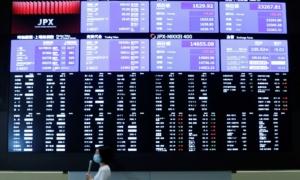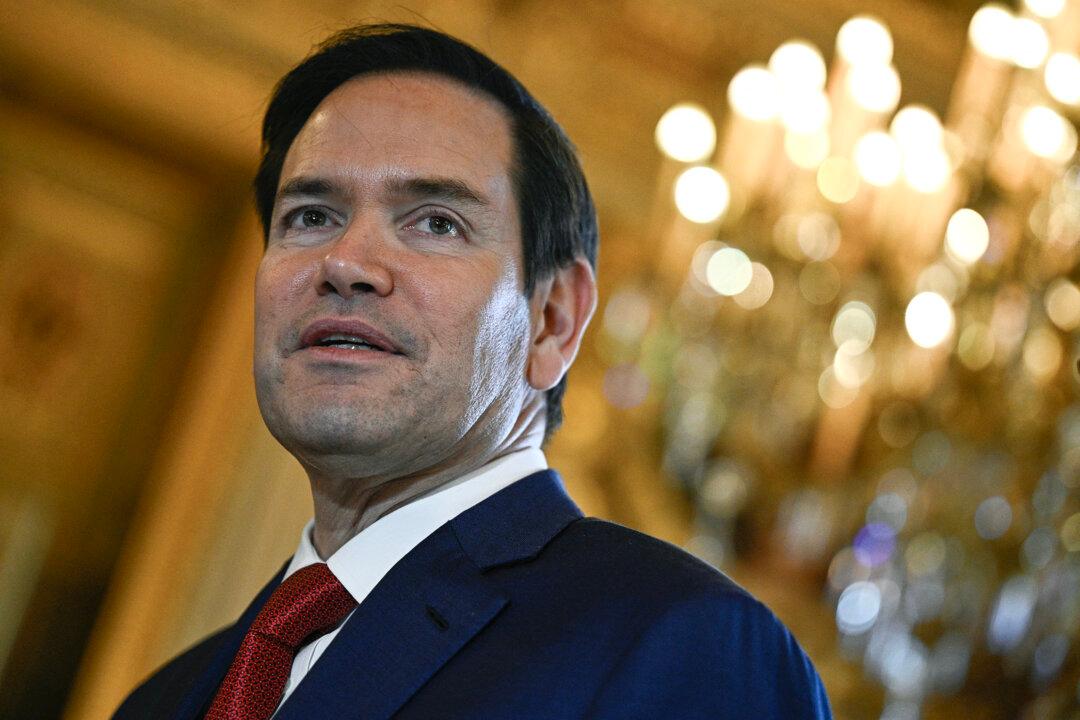A new report to Congress shows that, as the Federal Reserve raised interest rates last year at its fastest pace in decades, U.S. consumers paid a record-setting amount in credit card interest and fees.
It found that, as the Federal Reserve hiked rates sharply in 2022, variable-rate loan costs went up, and credit card companies charged consumers over $105 billion in interest and more than $25 billion in fees.
“Americans paid $130 billion in interest and fees on their credit cards,” CFPB Director Rohit Chopra said in a statement, which noted that this figure is an all-time high.
The blame for the record-high credit card interest payments squeezing American households, according to the CFPB, is the sharp run-up in the benchmark interest rate set by the U.S. central bank in response to soaring inflation.
In a desperate bid to quash spiking prices, the Federal Reserve started raising interest rates in March 2022 from near zero to the current level of 5.25-5.5 percent—the fastest pace since the 1980s.
Even though the Fed changes only a single rate—the federal funds rate—this has a direct effect on the interest that consumers pay on all manner of variable-rate loans.
“Federal Reserve rate increases triggered upward repricing on most general purpose cards, and issuers continue to price well above the prime rate, with an average annual percentage rate (APR) margin of 15.4 percentage points,” the CFPB report indicates.
Credit Card Interest Rates Soar
The average retail credit card is now charging a record-high interest rate of 28.93 percent, according to the latest Bankrate data.Four store-only retail credit cards—the Academy Sports + Outdoors Credit Card, Burlington Credit Card, Good Sam Rewards Credit Card, and Michaels Credit Card—all charge interest rates over 33 percent.
“We used to see 30 percent as the high end for retail credit card APRs,” Ted Rossman, Bankrate’s senior industry analyst, said in a statement. “In fact, 29.99 percent was an artificial barrier that few dared to cross—for psychological reasons, mostly. But the market has blown past that threshold given the Fed’s aggressive series of interest rate hikes over the past year and a half.”
Retail credit cards often offer special deferred interest promotions, but Bankrate analysts warn this poses a hidden threat to consumers who could get hit with unexpected interest fees if they don’t pay their balances in full before the promotional period ends.
The Bankrate analysis found that 16 retail credit cards (13 store-only and 3 co-branded offerings) charge balance-carrying consumers a whopping 32.24 percent interest rate.
‘Pattern of Persistent Indebtedness’
With total outstanding credit card debt eclipsing $1 trillion for the first time ever, the CFPB report warns that many cardholders are falling deeper into debt.“With the average minimum payment due increasing to over $100 on revolving general purpose accounts in 2022, more users are incurring late fees and facing higher costs on growing debt,” the report states.
One in ten general-purpose credit card accounts are charged more in interest and fees than they pay towards the principal, CFPB analysts said, a development that indicates a “pattern of persistent indebtedness that could become increasingly difficult for some consumers to escape.”
Defaults Climb for Most Household Debt
According to the latest household debt service data from the Federal Reserve, there’s been an increase in the percentage of nearly all types of household loans that have fallen into serious delinquency, defined as 90 days or more delinquent.Also, the percentage of home equity line of credit debt that went into serious delinquency over the same period went from 0.32 percent to 0.44 percent.
But the biggest jumps were in auto loans and credit card debt. Serious delinquency transition rates on auto loans went from 1.81 percent to 2.41 percent.
Credit card debt delinquency transitions went from 3.35 percent to 5.08 percent—an 11-year high.
The only type of household debt for which serious delinquency rates fell was student loans because of the student loan repayment freeze.
However, despite the rise in delinquency transition rates, the percentage of household loans in serious delinquency has held more or less steady over the duration of the Fed’s rate hikes. The reason is mostly because roughly 90 percent of household debt is at fixed rates, much of which was locked in before the central bank embarked on its rate-hiking cycle.
However, the analysts also noted that rising balances may pose a challenge to some borrowers, especially as the student loan repayment freeze lapsed this fall.
In an Oct. 18 update on the health of the U.S. consumer, New York Fed analysts said that consumer spending has remained surprisingly robust, although a depletion of excess savings poses headwinds.
Delinquency rates remain relatively low and household expectations for spending growth are “solid and stable,” they said.
“Of course, the period of very low interest rates that supported many of these developments is decidedly over, at least for now, suggesting that household finances will likely tighten further in the coming months,” the analysts wrote.







